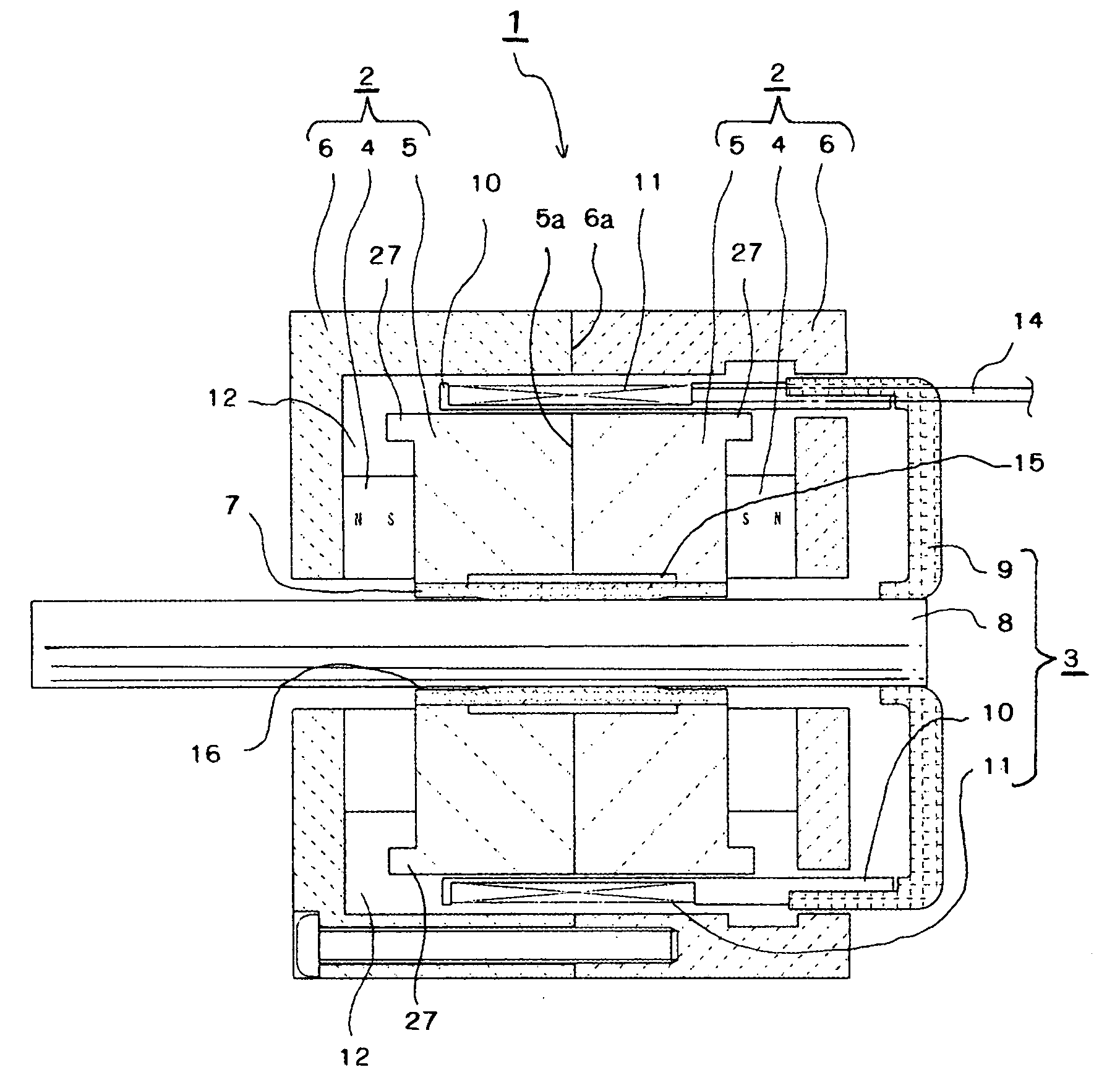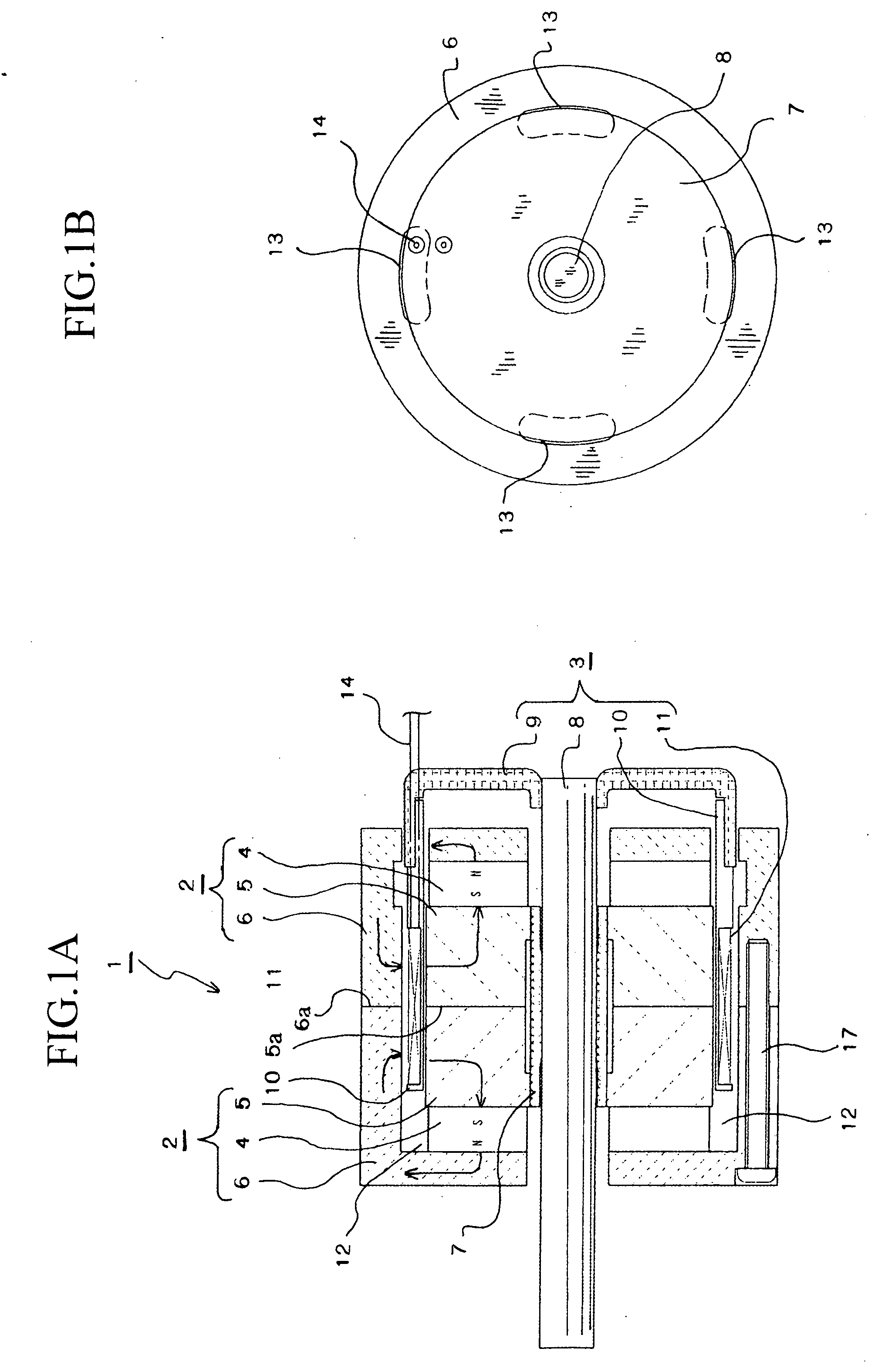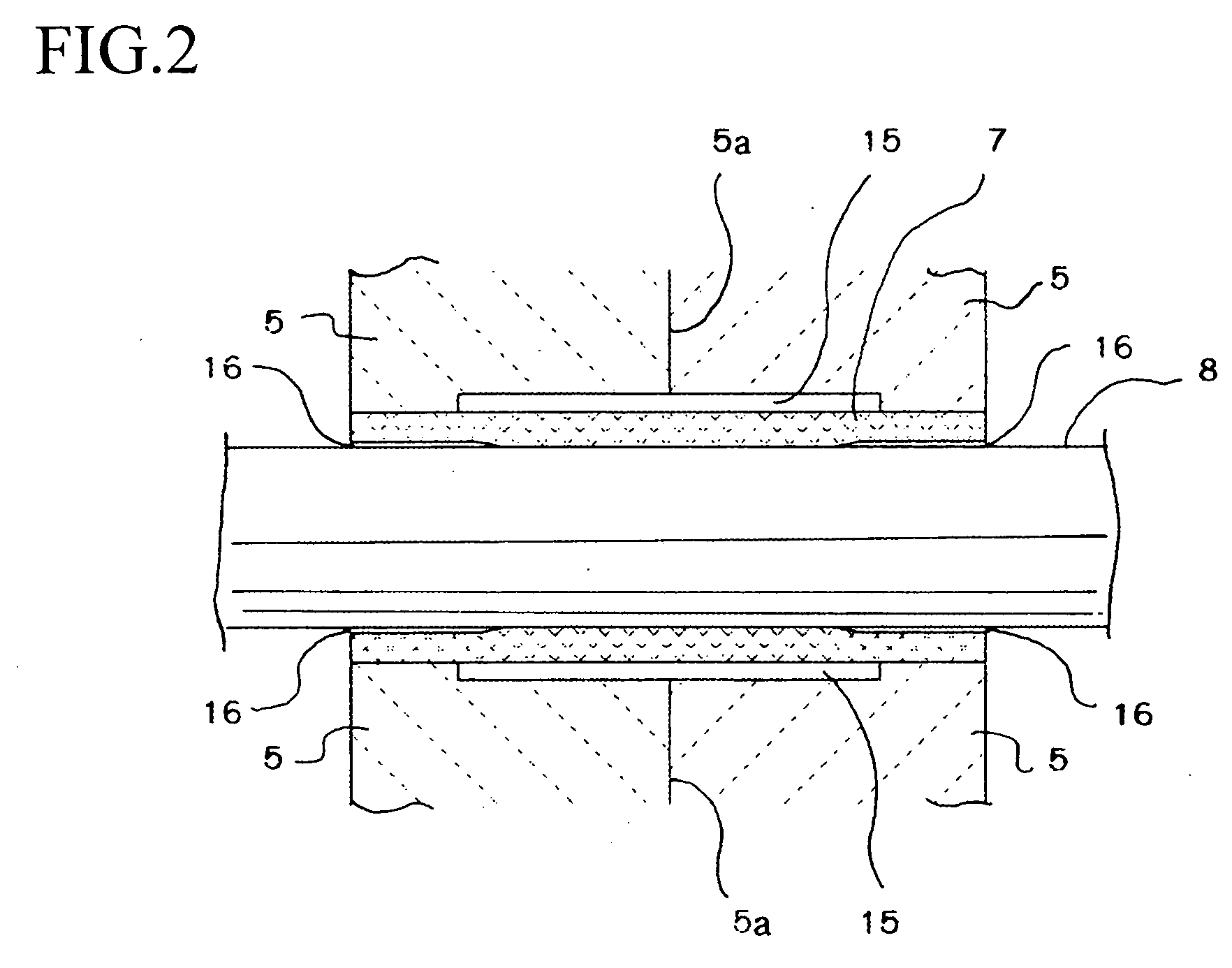Linear actuator
- Summary
- Abstract
- Description
- Claims
- Application Information
AI Technical Summary
Benefits of technology
Problems solved by technology
Method used
Image
Examples
first embodiment
[0042] The overall construction of a linear actuator according to a first embodiment will now be described with reference to FIGS. 1A to FIG. 6. In FIG. 1A, the yoke part (fixed part) 1 is formed by combining left and right yoke components 2, and a shaft-linked part (moving part) 3 is provided in spaces inside and outside the yoke part 1 and at a shaft core of the yoke part 1. In each yoke component 2, a ring-shaped first yoke 5 is provided adjacent to one side of a ring-shaped permanent magnet 4 and a cup-shaped second yoke 6 is provided adjacent to the other side of the permanent magnet 4. The first yoke 5 and the second yoke 6 are integrally attached to the permanent magnet 4 using adhesive. As examples, a neodymium magnet made of a neodymium-iron-boron (Ne—Fe—B) alloy or an alnico magnet made of an aluminum-nickel-cobalt (Al—Ni—Co) alloy, and the like can be used as the permanent magnet 4.
[0043] The yoke part 1 is formed by attaching the respective yoke components 2 to an outer...
second embodiment
[0058] Next, another embodiment of a linear actuator will be described. Components that are the same as in the first embodiment have been assigned the same numerals and description thereof has been omitted, with the following description focusing on the different constructions.
[0059] In FIG. 7, the pressing-in construction for the guide pipe 7 pressed into the shaft hole of the yoke part 1 differs. That is, the positions in the axial direction of the first gap 15 and the second gaps 16 that are formed in the inner circumferential surface side and the outer circumferential surface side of the guide pipe 7 differ. In the present embodiment, the guide pipe 7 is pressed into shaft holes in the second yokes 6 in the left and right yoke components 2. In the guide pipe 7 pressed into the shaft holes of the yoke components 2 (specifically in the second yokes 6 in the present embodiment), the first gap 15 is formed between the outer circumferential surface of the guide pipe 7 and the inner ...
third embodiment
[0060] Next, another embodiment of a linear actuator will be described. Components that are the same as in the first embodiment have been assigned the same numerals and description thereof has been omitted, with the following description focusing on the different constructions.
[0061]FIG. 8 shows a different pressing-in construction for the guide pipe 7 pressed into the shaft hole of the yoke part 1. That is, in the present embodiment, the guide pipe 7 is pressed into shaft holes in the first yokes 5 and the second yokes 6 in the left and right yoke components 2. When the guide pipe 7 is pressed into the shaft holes of the yoke components 2 (in the present embodiment, the first yokes 5 and the second yokes 6), the first gap 15 is formed between the outer circumferential surface of the guide pipe 7 and the inner circumferential surfaces of the first yokes 5 corresponding to an area in the axial direction including a position where the pipe inner circumferential surface and the moving...
PUM
 Login to View More
Login to View More Abstract
Description
Claims
Application Information
 Login to View More
Login to View More - R&D
- Intellectual Property
- Life Sciences
- Materials
- Tech Scout
- Unparalleled Data Quality
- Higher Quality Content
- 60% Fewer Hallucinations
Browse by: Latest US Patents, China's latest patents, Technical Efficacy Thesaurus, Application Domain, Technology Topic, Popular Technical Reports.
© 2025 PatSnap. All rights reserved.Legal|Privacy policy|Modern Slavery Act Transparency Statement|Sitemap|About US| Contact US: help@patsnap.com



